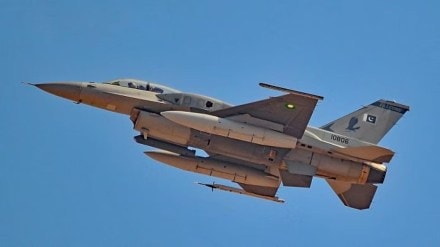Pakistan’s Air Force may soon face a significant setback as its fleet of F-16 fighter jets could be grounded due to financial constraints. The country, grappling with economic difficulties, is struggling to maintain these American-made aircraft, crucial for its defence capabilities. This situation underscores the broader challenges facing Pakistan’s military infrastructure amidst ongoing geopolitical tensions and internal security issues.
Financial Challenges and Maintenance Issues
The Mirage Rebuild Factory (MRF), responsible for maintaining Pakistan’s F-16 fleet, recently warned the Directorate of Logistics of the Pakistan Aeronautical Complex about an impending crisis. In a letter, MRF stated that a payment of $682,000 to the US Foreign Military Sales (FMS) program is overdue. This payment is critical for the continued maintenance and supply of spare parts for the F-16s. The MRF highlighted that the operational readiness of these jets, known for their strategic importance, could be severely compromised if the dues remain unpaid.
This financial predicament has already led to a suspension in the delivery of essential spare parts from the United States, putting the fleet’s operational capabilities at risk. The situation is particularly concerning given the F-16’s role as a key asset in Pakistan’s air defence, notably during the aerial engagement with India following the Balakot airstrike, where an F-16 was reportedly shot down by an Indian MiG-21.
Historical Context and Strategic Concerns
Pakistan acquired 40 F-16 fighter jets from the United States in the early 1980s, with subsequent purchases and upgrades made through the FMS program. Following the 9/11 attacks, Pakistan sought additional advanced F-16s, which the US agreed to provide under stringent conditions. One key stipulation was the deployment of an American technical security team to oversee the maintenance and security of the aircraft, ensuring they were not misused or shared with third parties, particularly considering Pakistan’s collaboration with China on the JF-17 fighter jet.
The American oversight team, comprising around 30 contractors and several US Air Force officers, has been stationed at Pakistani air bases, Shahbaz and Musaf, to ensure compliance with these conditions. This arrangement underscores the strategic sensitivity surrounding the F-16s, especially given Pakistan’s complex relationship with the US and its pivot towards China and Russia in recent years.
US Aid and Pakistan’s Strategic Shifts
In 2022, the US provided Pakistan with $450 million in aid to upgrade its F-16 fleet, a move that India strongly opposed. This aid came after a period of strained relations, during which former President Donald Trump had cut off security assistance to Pakistan, citing its inadequate efforts to combat the Taliban and Haqqani network. The aid was seen as a strategic manoeuvre by the US, possibly as a gesture towards Pakistan following Imran Khan’s departure as Prime Minister and his previous alignment towards Russia.
The situation illustrates the precarious balance Pakistan must maintain in its foreign relations, especially as it navigates its alliances and military dependencies. While the US has offered advanced fighter jets like the F-21 and the fifth-generation F-35 to India, Islamabad continues to rely on its aging F-16 fleet, which now faces the threat of being grounded due to financial mismanagement.
Conclusion
The potential grounding of Pakistan’s F-16 fighter jets due to financial difficulties highlights the country’s ongoing struggles to maintain its military assets amidst economic and geopolitical challenges. As the situation unfolds, it remains to be seen how Pakistan will address these issues and whether it can secure the necessary resources to keep its air force operational. The grounding of these jets would not only impact Pakistan’s defence readiness but also reflect broader issues within its military and economic policies.
Pakistan’s Fighter Fleet Faces Grounding: Financial Struggles and Strategic Implications
This financial predicament has already led to a suspension in the delivery of essential spare parts from the United States, putting the fleet's operational capabilities at risk.
Written by Express Defence

TOPICSPakistan
This article was first uploaded on July thirty, twenty twenty-four, at forty minutes past seven in the evening.